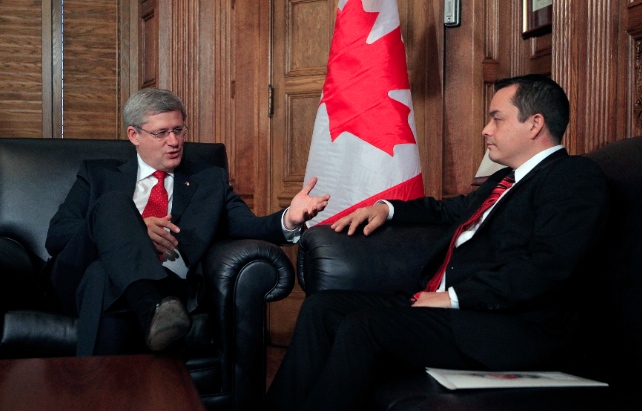The government must go beyond mere window dressing and pursue tangible outcomes that address the needs of Aboriginal Canadians.
In light of the recent tensions and public outcry surrounding the crisis in Attawapiskat, it is reasonable to suppose that the First Nations-federal government gathering today will touch on urgent matters facing many First Nations communities: housing and water, education and health, economic viability and resource rights. And, indeed, in recent days, both government and community representatives have spoken to the relevance of these issues for First Nations across the country. But there is one central problem: The meeting will be missing several key players in the process – namely, the premiers of the provinces and territories. How can lasting change be secured when not all of the parties to the First Nations-Crown relationship are present?
The crisis in Attawapiskat has highlighted the critical and fundamental human needs that are not being met for so many First Nations across the country. The media, along with a newly interested public, turned their attention to dig deeper and uncover the truth about this deplorable situation, including the fact that it has festered for over 30 years, largely ignored by government. And yet, Assembly of First Nations (AFN) Chief Shawn Atleo has expressed his optimism for building the relationship between First Nations and government at today’s meeting. This seems too simple an objective for a mere five-hour meeting. Indeed, Atleo’s hope that the federal government will simply demonstrate “willingness … to do the work that is needed” seems vague and ineffectual. Grassroots community members often consider First Nations leaders who tiptoe around government inaction to be weak turncoats. Such sentiment is hardly surprising given centuries of conflict and breached treaties, and now decades of stalled negotiations and impoverished living conditions. At this point in First Nations-Crown interactions, much more is needed than tepid willingness on the part of representatives: Tangible results and measurable outcomes are required in order to strengthen relationships and build mutual trust.
Interestingly, the key priorities to be tackled at the meeting – strengthening First Nations-Crown relationships, economic potential, and community promise – appear far-reaching and ambitious, but reflect imprecision and vagueness. These topics sound strikingly similar to the issues already negotiated in the Kelowna Accord, which were shelved during the tenure of Prime Minister Stephen Harper’s previous minority government. The Conservative government states that the intent of today’s meeting is to craft practical approaches to pressing concerns plaguing many First Nations communities, but this language is nebulous. What exactly are the objectives in discussing economic sustainability and promise? Is it reasonable to expect stronger community-government relationships without determined leadership, or without the participation of provincial and territorial leaders? In this light, the gathering appears to be nothing more than window dressing aimed at covering some of the contentious issues that the federal government faces on the “Aboriginal Affairs” file.
One approach that the government could take, and which might hold more traction among First Nations communities, is an explicit recognition of misdeeds inflicted upon these injured peoples. Such recognition would have to go far beyond the 2008 government apology on Indian Residential Schools, accepting responsibility for ongoing problems and current neglect. Asserting First Nations mismanagement of government funds does little more than shift blame to those who are suffering most, while undermining trust further.
One final step, which is arguably the most likely to promote trust, also seems the least likely to happen, at least in the short term. This step would require government to put action behind words with the provision of robust funding programs to ensure that First Nations achieve a standard of living that meets the Canadian average. This would mean matching educational funding for First Nations children on reserves, distributing adequate resources for ample infrastructure, housing, and sanitation, and taking tangible steps to aggressively counter deteriorating First Nations’ health. Above all, this approach would entail the realization that blaming the victim never suffices, and that First Nations require support – both fiscally and politically – to govern themselves and develop economic and community sustainability. Upholding the honour of the Crown mandates nothing less.
Original Article
Source: the Mark
Author: Jennifer Dalton

No comments:
Post a Comment